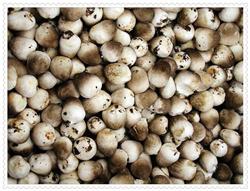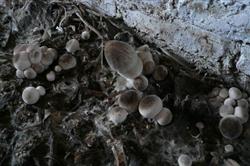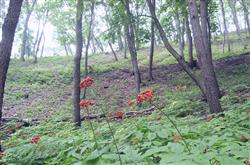How can volvariella volvacea be planted in summer with high yield?

How can volvariella volvacea be planted in summer with high yield? Planting volvariella volvacea in summer can refer to the following planting methods: 1. Cultivation season: volvariella volvacea belongs to high temperature fungi. The suitable temperature range for mycelium growth of volvariella volvacea is 15-40 ℃, the optimum temperature for mycelium growth is 30-35 ℃, the temperature for fruiting body growth is 26-34 ℃, and the most suitable temperature is 28-30 ℃. It is generally cultivated from June to August every year. 2. Cultivation raw materials: cottonseed hull, rice straw, corncob, wheat straw. 3. Raw material formula: ⑴ cottonseed hull 100, wheat bran 5, potassium dihydrogen phosphate 0.3, calcium superphosphate 0.5, carbendazim 0.2, lime 6, insecticide 0.1, water 140. ⑵ corncob 80, cottonseed hull 20, potassium dihydrogen phosphate 0.3, calcium superphosphate 0.5, carbendazim 0.2, lime 6, insecticide 0.1, water 140. 4. Pile-building fermentation: the cultivation raw materials were pre-wet for 3-4 days and then built and heated up. When mixing materials, mix evenly, the water content of cultivation raw materials is about 65%, and it is easy to grow miscellaneous bacteria with large water content. After 3-4 days of fermentation, actinomycetes were seen, the smell of wine was smelled, and when the raw materials were brown, the cultivation materials were adjusted so that the pH value was 8-9, and the seeds could be sown in the shed. 5. Sowing in the greenhouse: as straw mushrooms are mostly cultivated in the summer high temperature season, straw mushrooms can be cultivated in idle greenhouses and arched sheds in fast-growing forests. The paving material should not be too thick, 15 cm thick, and the cultivation bed should be 60 cm wide. The bed is wavy. Hole sowing or layer sowing can be used to punch holes in the material layer. Cover the bacteria with a small plastic shed and ventilate properly. Mushroom buds can be seen 7 days after sowing and appear on the market 10 days after sowing. Straw mushroom growth process in the high temperature season, should spray water frequently, spray water temperature should be the same as the greenhouse temperature, can store water in the shed for reserve. 6. Mushroom production management: the suitable temperature for volvariella volvacea reproductive growth stage is 26-34 ℃; scattered light should be used for light, and the light should be weak at the initial stage of fungus emergence; 4-5 days after planting until the end of mushroom production, scattered light should be properly strengthened, and the light intensity should be able to read newspapers and avoid direct sunlight. During the mushroom emergence period, ventilation should be combined with water spraying and moisturizing. During mushroom emergence, the ground and space should be sprayed before ventilation, and the relative humidity should be maintained at 80-95%. Then ventilation should be carried out for about 20 minutes, 2-3 times a day. 7. Harvest: generally, 10-12 days after sowing, when the mushroom bud is the size of quail eggs, it can be harvested. Pick once in the morning, in the evening, to prevent the opening of umbrellas to reduce the value of goods. Each stubble of mushrooms can be harvested for about 20 days. All kinds of nutrient solution can be sprayed on the material surface after each crop to prolong the harvest time and increase the yield. After picking a tide of mushrooms, spray with clear lime water with pH 12-14, the water temperature is the same as the greenhouse temperature. Click to get more straw mushroom planting technology click to get more edible mushroom planting technology
- Prev

How to grow straw mushrooms in summer?
How to grow straw mushrooms in summer? Volvariella volvacea is a kind of high temperature mushroom, which is suitable for cultivation in summer. It has tender meat, delicious taste, high nutritional value, and is rich in protein, sugars and vitamins. Straw mushroom in many edible fungi cultivation method is the simplest, production cycle is the shortest (20 days left.
- Next

How to prevent ginseng blight?
How to prevent ginseng blight? Ginseng blight occurs at the base of seedling stem, mostly in the alternate dry and wet soil 3-5 cm underground from topsoil. Control methods: 1,"seed" disinfection: with 25% fludioxonil suspension seed coating agent 5-20 times solution mixed seeds or 50-100 times solution dipped in "seed" to kill seeds carry...
Related
- Fuxing push coffee new agricultural production and marketing class: lack of small-scale processing plants
- Jujube rice field leisure farm deep ploughing Yilan for five years to create a space for organic food and play
- Nongyu Farm-A trial of organic papaya for brave women with advanced technology
- Four points for attention in the prevention and control of diseases and insect pests of edible fungi
- How to add nutrient solution to Edible Fungi
- Is there any good way to control edible fungus mites?
- Open Inoculation Technology of Edible Fungi
- Is there any clever way to use fertilizer for edible fungus in winter?
- What agents are used to kill the pathogens of edible fungi in the mushroom shed?
- Rapid drying of Edible Fungi

